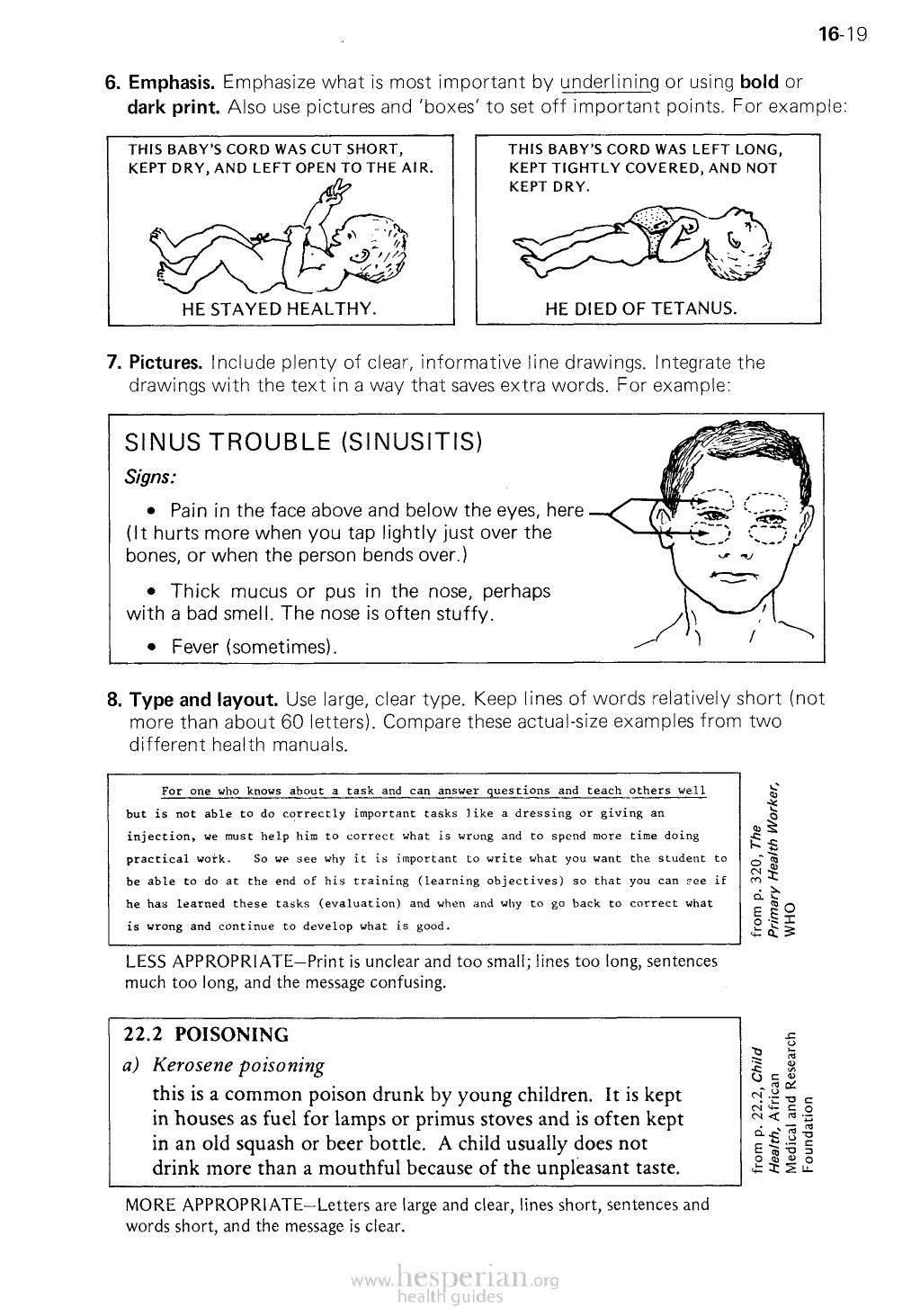
16-19
6. Emphasis. Emphasize what is most important by underlining or using bold or
dark print. Also use pictures and ‘boxes’ to set off important points. For example:
THIS BABY’S CORD WAS CUT SHORT,
KEPT DRY, AND LEFT OPEN TO THE AIR.
THIS BABY’S CORD WAS LEFT LONG,
KEPT TIGHTLY COVERED, AND NOT
KEPT DRY.
HE STAYED HEALTHY.
HE DIED OF TETANUS.
7. Pictures. Include plenty of clear, informative line drawings. Integrate the
drawings with the text in a way that saves extra words. For example:
SINUS TROUBLE (SINUSITIS)
Signs:
• Pain in the face above and below the eyes,
here (It hurts more when you tap lightly just over
the bones, or when the person bends over.)
• Thick mucus or pus in the nose, perhaps with
a bad smell. The nose is often stuffy.
• Fever {sometimes).
8. Type and layout. Use large, clear type. Keep lines of words relatively short
(not more than about 60 letters). Compare these actual-size examples from two
different health manuals.
For one who knows about a task and can answer questions and teach others well
but is not able to do correctly important tasks like a dressing or giving an injection, we
must held him to correct what is wrong and to spend more time doing practical work.
So we see why it is important to write what you want the student to be able to do at
the end of his training (lear ning objectives) so that you can see if he has learned these
tasks (evaluation) and when and why to go back to correct what is wrong and continue
to develop what is good.
LESS APPROPRI ATE-Print is unclear and too small; lines too long,
sentences much too long, and the message confusing.
22. 2 POISONING
a) Kerosene poisoning
this is a common poison drunk by young children. It is kept in
houses as fuel for lamps or primus stoves and is often kept in an
old squash or beer bottle. A child usually does not drink more
than a mouthful because of the unpleasant taste.
MORE APPROPRIATE-Letters are large and clear, lines short, sentences and
words short, and the message is clear.